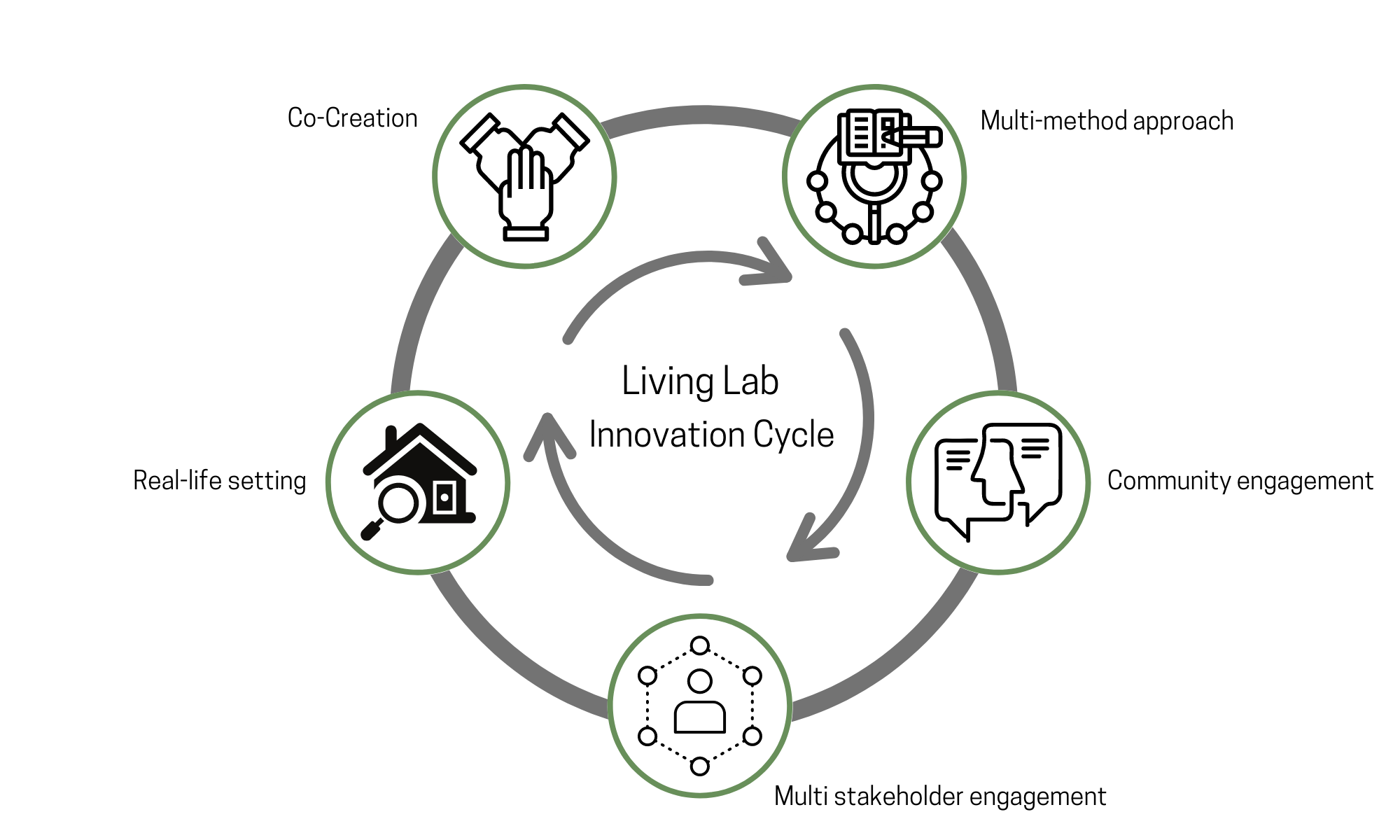“Disturbers are never popular – nobody ever really loved the alarm clock in action – no matter how grateful they may have been afterwards for its kind service.” - Nellie McClung
Those of us working in communities recognize the need for greater innovation and experimentation if we want to accelerate our ability to advance positive  change in neighbourhoods, municipalities and regions. Whether the focus of our work is: citizen engagement, belonging, community safety, poverty-reduction, housing, or community economic development, there is a growing recognition that wiser and bolder approaches are needed to effectively meet the complex challenges before us. So, where do we begin? The robust field of social innovation offers important insights, lessons, patterns and practices to consider.
change in neighbourhoods, municipalities and regions. Whether the focus of our work is: citizen engagement, belonging, community safety, poverty-reduction, housing, or community economic development, there is a growing recognition that wiser and bolder approaches are needed to effectively meet the complex challenges before us. So, where do we begin? The robust field of social innovation offers important insights, lessons, patterns and practices to consider.
ABSI Connect Fellows spent seven months, exploring the field of social innovation in Alberta and the findings of their in-depth exploration are contained in their report, The Future of Social Innovation Alberta 2016. They describe social innovation less as an end-goal or clear formula and more like an ecosystem, or set of, “…people, practices, policies, resources relationships and capacities that interweave together to support social innovation in Alberta.” Their learnings contribute to a growing body of knowledge about the field of social innovation.
A review of the social innovation field offers useful insights for those eager to enhance the impact of their community innovation efforts. Four of these insights are highlighted below.
Insight #1 Consider Innovation on a Continuum
It is useful to think about innovation as unfolding along a continuum, towards an agreed upon end goal. Thinking this way helps to avoid the temptation of choosing one possible idea over another, and instead encourages us to consider the relationship between ideas. In her blog, Nesting Social Innovation, Cheryl Rose, a Senior Fellow with the J.W. McConnell Family Foundation, identifies four different but uniquely powerful elements of change-making:
- Intention – The point when there is AWARENESS that a problem exists
- Involvement – The point when SOMETHING IS DONE about the problem
- Invention – The point when NEW WAYS of addressing the problem are found (e.g. faster, stronger, better)
- Innovation – The point when ROOT CAUSES of the problem are addressed (e.g. changing rules & relationships)
While each of these elements of change-making can stand alone, their full impact is revealed when they are “nested” together. Using the analogy of babushka dolls, Rose observes, "real lasting innovation at a systems level cannot happen without enough creative invention to demonstrate and prepare new possibilities. This rarely happens without significant involvement to gain deep understanding in the issue area, which itself will never occur without sparking individuals’ intention, and their desire to be part of making change happen. When this interconnectedness is present, the energy of a whole field works for impact – and that can make all the difference.”
Insight #2 Emphasize Adaptive Strategies Over Comprehensive Plans
An innovator’s response to problem-solving is less focused on planning and more on process. Interviews conducted by the ABSI Fellows found that, “many successful innovators firmly stated that their key to making progress on complex problems was their ability to be nimble with regard to planning and program development.” So, while there is growing awareness of the limitations of 5-year strategic plans in today’s rapidly-changing world, there is a need to build capacity for adaptive planning with staff and boards in community agencies. Organizations like InWithForward and Winnipeg Boldness provide powerful examples of adaptive problem-solving in action at the community level.
Insight #3 Design With Not For
The design of promising innovations to vexing community problems begins by shifting the relationship between those experiencing the problem and those who see it as their role to fix it. Investing time to build an evidence-informed view of the system that reflects a diversity of perspectives ensures that the issue – and not the proposed intervention – remains at the centre of thinking and action. This kind of cross-sectoral work often requires working across administrative silos and a willingness and openess to engaging government and unusual partners to join in reimagining what is needed and how best to do it.
Insight #4 Recognize and Cultivate the Skills of "Institutional Entrepreneurs"
Renown researcher and social change expert, Frances Westley has long studied the dynamics of systems change which are at the heart of social and community innovation. Her paper, A Theory of Transformative Agency in Linked Social-Ecological Systems explores the role of change makers (individuals and groups) in influencing the transformation of complex systems. Westley calls these individuals and groups “institutional entrepreneurs” and she has identified nine skills that these change agents draw upon as they act as catalysts in the transformation of complex systems. The nine skills of "institutional entrepreneurs" are:
- Facilitating Knowledge Building & Utilization – This skill is demonstrated by the ability to generate and integrate a diversity of ideas, viewpoints and solutions
- Vision Building – This skill includes the ability to synthesize a compelling, inspiring vision that unifies individual visions and attracts support
- Developing Social Networks – This skill encompasses the building of mult-sector coalitions as well as the capacity to bridge between different actors and stakeholders within a variety of organizations and/or hierarchies
- Building Trust, Legitimacy and Social Capital – This skill includes the ability to recognize the contributions of formal authorities and bridge them with the emerging consensus of a diverse group of stakeholders
- Facilitating the Development of Innovations – This skill emphasizes the ability to foster knowledge-building by linking different types of thinking as well as the ability to identify and introduce new processes and products.
- Mobilizing for Change – This skill includes linking innovative ideas to existing funding opportunities as well as the ability to leverage existing and new resources and funding to support promising innovations
- Recognizing Windows of Opportunity – This skill includes the ability to sense, and capitalize on, the dynamics of the system one is operating in to identify and capitalize on emerging opportunities.
- Identifying Opportunities for “Small Wins” – This skill highlights the ability to envision small, achievable projects, that offer promise in demonstrating the possibilities of systems change and innovation.
- Facilitating Conflict Resolution – Conflict is often a natural and normal by-product when diverse perspectives attempt to work together on a common issue. This skill recognizes the ability to effectively surface and resolve tension when it emerges and is critical to the long-term effectiveness of any system change effort
Drawing upon the insights, practices and learnings of the field of social innovation offers a useful lens to inspire and invite us to think critically about ehancing our community innovation effforts. However, discernment -- and trust in one's own knowledge of community work -- is also required to ensure that ideas and approaches do not trump the unique context of your community, and that the needs of community remain at the centre of your thinking and action.
Learn More:
- Join Frances Westley at Tamarack’s Community Change Institute, Toronto, Ontario, September 26th - 30th, 2016
- Read A Theory of Transformative Agency in Linked Social-Ecological Systems by Frances Westley
- Download the Report of the ABSI Fellows, The Future of Social Innovation Alberta 2016 Report and Summary
- Read Cheryl Rose’s blog, Nesting Social Innovation for more on the Social Innovation Continnum
Share this article:





